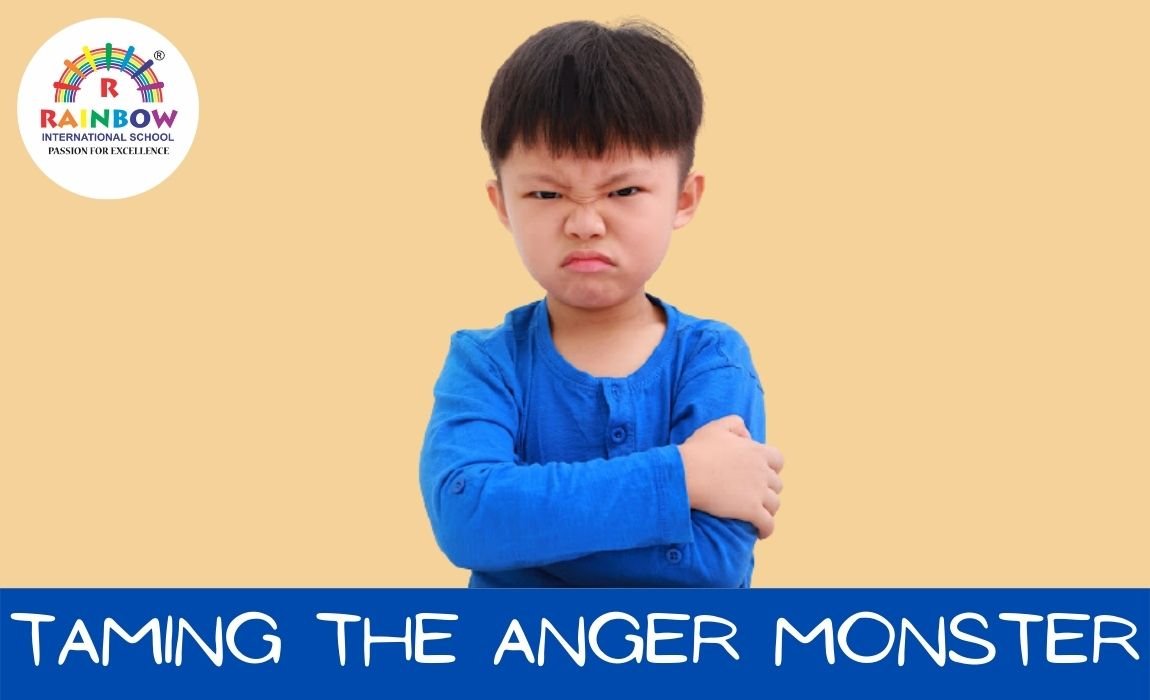Anger is an emotion just like happiness, sadness or fear, and thus, a normal phenomenon in children of all ages. However, children often struggle to understand the difference between being angry and being aggressive. Frustration and anger oftentimes quickly turns to disrespect, defiance, aggression and temper tantrums, especially when children don’t know how to deal with this emotion.
If left unchecked, childhood aggression like fighting, spitting or scratching can lead to additional issues such as peer rejections, bad grades and poor mental as well as physical health. For children who have trouble subduing their anger, you can use the following techniques to help them manage their anger better:
Feeling vs Behaviour
Start by teaching the children to label their emotions so they can verbalise their negative feelings such as anger, disappointment and frustration. Try telling them that it is okay to be angry but it is not okay to hit or scratch. The very first step to anger management is to help your child understand that they are in control of their own actions when they are angry.
It’s important to understand that sometimes aggressive behavior stems out of a variety of uncomfortable feelings, like sadness or humiliation. Help your child explore why they are feeling angry. For instance, they are upset that their plan with their friends has been cancelled, but they react to the situation with anger simply because it’s easier or it masks the hurt they are feeling.
Modelling Appropriate Anger Management Skills
The best way to teach your young ones to manage their anger is to show them firsthand. When children watch you (their parents) losing temper and getting aggressive, they are more likely to do the same. On the other hand, when they see you cope with your feelings in a kinder and gentler way, they are likely to pick on that instead of showing aggression.
Start verbalising your feelings and thoughts when dealing with negative emotions such as anger and frustration. For example, saying things like “I’m angry that the car beside us jumped the red light, but I’m going to stay right here until the signal is green. That way, at least I’m following the law”. This will encourage your children to talk about their feelings, which will help them manage their anger much easier.
Moreover, start taking responsibility for your behaviour when you lose your cool. Apologise and discuss the things you should’ve done instead. This will enable the children to do the same when they lose their cool and act inappropriately.
Establishing the Anger Rules
Most families have unwritten rules in their family about what kind of behaviour is acceptable and what isn’t when it comes to anger. While some families don’t mind the door slamming, others might be a lot less tolerant of such behaviour. Create a proper, physical rulebook or a list of rules that outline your expectations. Address areas like physical aggression, name calling and destruction of property to ensure that your children understand that they cannot throw or break things, lash out verbally or physically when they are angry. These rules will need to be applicable to each and every member of the family irrespective of age, gender or experience.
Teaching Healthy Coping Mechanisms
Alternative Action
Children need to know the right way to vent out their anger and deal with their negative emotions. Instead of telling them what not to do, you can tell them what to do when they are angry. For instance, instead of telling them not to hit their sibling, tell them to walk out of the room or use words to express their anger. For better results, you can ask the child what they can do instead of hitting their sibling. Doing this will enable the child to start thinking in the right direction than react mindlessly when they are angry the next time.
Anger Management Box
Fill a box with items that you know will calm the child when they are angry. Items like colouring books and crayons, creams and lotions that smell good, stress balls, ipod with jazz/classical music, etc. are helpful in calming the child down. When preparing this box, you will need to consider your child’s tastes and preferences to make a customised box that’s solely made for your child.
Problem Solving Skills
Teach your child problem solving skills so they learn to recognise that they can solve problems without resorting to aggression. This is especially helpful when they are in a fight. Talk to them and discuss with them how they can resolve a conflict peacefully instead of with fists.
Offer Consequence when Necessary
Offering consequences doesn’t just mean punishing them for misbehaving. Offer them a reward when they handle a situation positively. Similarly, punish them appropriately when they handle their anger in a negative way. Positive consequences may include rewards like treats, toys, 30 minutes of extra screen time and so on. Negative consequences may include punishments like timeouts, loss of privileges, doing extra chores, loaning a toy to the target of the aggression and many more.
A Word from Verywell
It’s perfectly normal and natural for the children to struggle when managing their anger. However, with your guidance, your young one will be able subdue the ‘Anger Monster’ a lot easier. When children struggle to get their anger under control or their anger issues seem to be getting worse, it is important to get professional help. A well trained professional such as a psychiatric counsellor or a psychiatrist can rule out any underlying mental health problems and will be able to help better with a behavioural management plan.

